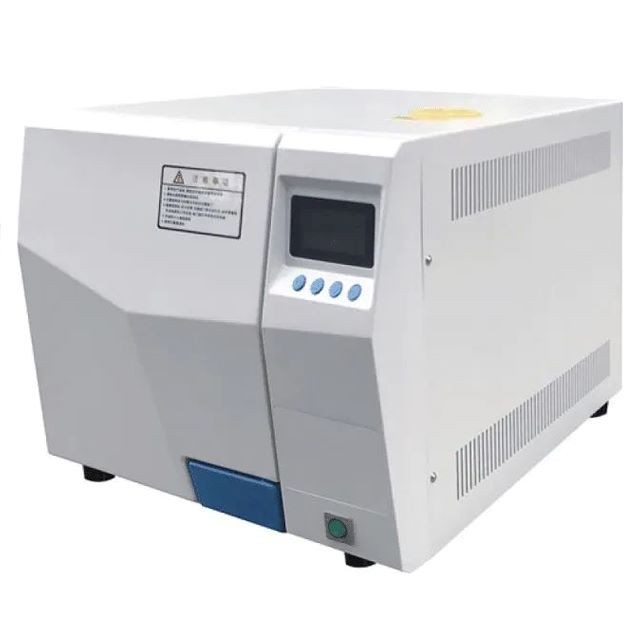
sterilization equipment
Desktop Fast Laboratory Autoclave Sterilizer 20L 24L for Lab Use
Item Number : KT-B03
Price varies based on specs and customizations
- Electric Tension
- 220V
- Working Pressure
- 0.22MPa
Shipping:
Contact us to get shipping details Enjoy On-time Dispatch Guarantee.
Why Choose Us
Reliable PartnerEasy ordering process, quality products, and dedicated support for your business success.
Introduction
Tabletop sterilizer is a safe, reliable and self-controlled small-scale rapid tabletop sterilization equipment, suitable for medical, pharmaceutical, scientific research and other units. It provides rapid sterilization for items that can withstand saturated steam, such as operating room, dental, ophthalmic instruments, glassware, medicines, culture media, textile accessories and food. We offer three compact and reliable tabletop autoclaves, ideal for hospitals, clinics, labs, and pharmaceutical use.
Models to Choose From:
- Pulsating Vacuum Type – For Class A & B hollow instruments, dressings, and medical tubing.
- Internal Steam Discharge Type – No external steam release; steam condenses and drains as water.
- With Drying Function – Sterilizes and dries items in one cycle.
Detail & Parts
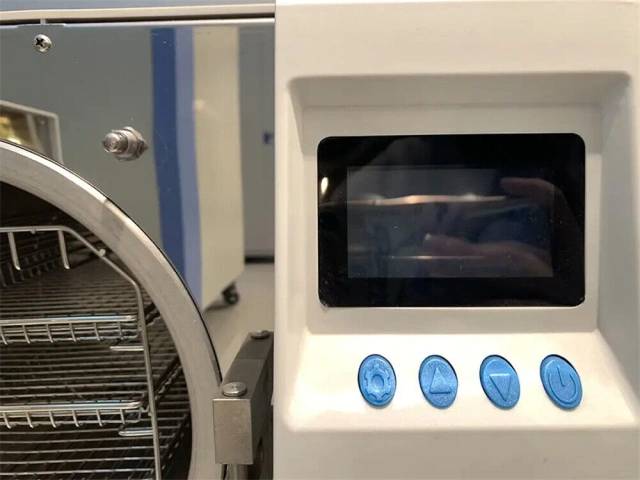
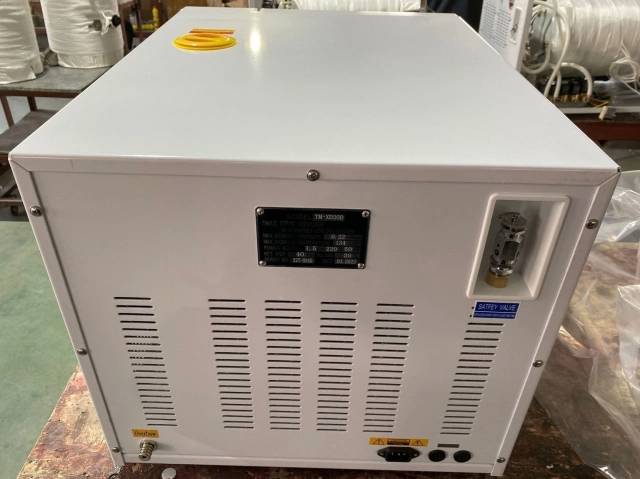

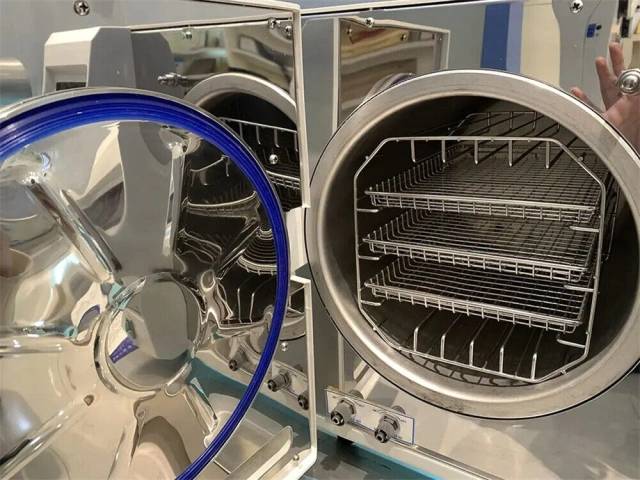
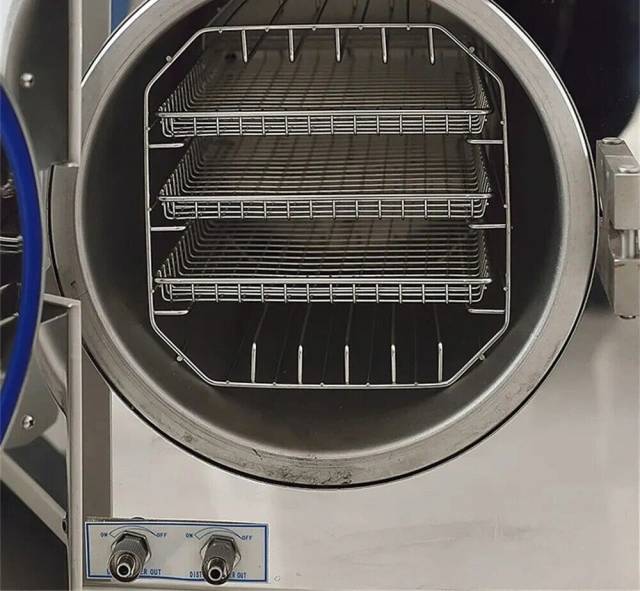
Performance and Features
- Sterilize quickly in 4-6 minutes
- Steam-water internal circulation system, no steam is discharged outside, and the environment is clean and dry
- Equipped with four layers of stainless steel disinfection tray
- Microcomputer display working status, touch buttons
- The sterilization chamber is made of high quality stainless steel
- There are three fixed sterilization programs and user-adjustable programs
- Water cut protection control
- Buzzer to remind automatic shutdown at the end of sterilization cycle
- Automatic control of the whole process of adding water, heating, sterilizing, exhausting and drying
- Automatic exhaust of cold air
- with drying function
- Door Safety Interlock
Technical Parameters
| Model | KT-XD20D | KT-XD24D |
| Sterilization chamber volume | 20L φ250×420mm | 24L φ250×520mm |
| Fixed work stress | 0.22Mpa | |
| Rated working temperature | 134℃ | |
| Sterilization temperature selection | 105-134℃ | |
| Timing time selection range | 0-99min | |
| Heat uniformity of sterilization room | ≤±1℃ | |
| Power/supply voltage | 1.5KW/AC220V.50Hz | |
| Sterilization tray (mm) | 340×200×30(3piece) | 400×200×30(3piece) |
| Overall dimensions (mm) | 480×680×455 | 480×680×455 |
| Packing size (mm) | 580×700×500 | 580×800×560 |
| Gross weight/net weight | 43/40Kg | 50/45Kg |
Designed for You
KinTek provide deep custom made service and equipment to worldwide customers, our specialized teamwork and rich experienced engineers are capable to undertake the custom tailoring hardware and software equipment requirements, and help our customer to build up the exclusive and personalized equipment and solution!
Would you please drop your ideas to us, our engineers are ready for you now!
FAQ
What Is A Steam Sterilizer?
What Are Some Common Applications Of Sterilization Autoclaves?
What Is An Autoclave Sterilizer?
How Does A Steam Sterilizer Work?
How Long Does A Typical Sterilization Autoclave Cycle Take?
How Does An Autoclave Sterilizer Work?
What Are Some Common Applications Of Steam Sterilizers?
Can Autoclave Sterilization Be Validated For Effectiveness?
What Are The Advantages Of Using Autoclave Sterilizers?
How Long Does A Typical Steam Sterilizer Cycle Take?
Can Autoclave Sterilization Damage Certain Materials?
What Safety Precautions Should Be Taken When Using Autoclave Sterilizers?
Can Steam Sterilization Be Validated For Effectiveness?
How Should Autoclave Sterilization Be Monitored And Documented?
Can All Materials And Items Be Sterilized Using Autoclave Sterilizers?
Can Steam Sterilization Damage Certain Materials?
Are There Different Types Of Autoclave Sterilizers Available?
4.8
out of
5
The autoclave is a lifesaver in our lab. It's fast, efficient, and easy to use. We can sterilize a large batch of instruments in just a few minutes.
4.9
out of
5
This autoclave is a great value for the money. It's well-made and durable, and it has all the features we need. We've been using it for over a year now and it's still going strong.
4.7
out of
5
The KINTEK autoclave is a top-of-the-line product. It's technologically advanced and easy to use. We've been using it for several months now and we've had no problems with it.
4.6
out of
5
This autoclave is a great addition to our lab. It's fast, efficient, and easy to use. We've been using it for a few weeks now and we're very happy with it.
4.8
out of
5
The KINTEK autoclave is a great investment. It's made of high-quality materials and it's built to last. We've been using it for a few months now and it's still working like new.
4.7
out of
5
This autoclave is a lifesaver in our clinic. It's fast, efficient, and easy to use. We can sterilize a large batch of instruments in just a few minutes.
4.9
out of
5
This autoclave is a great value for the money. It's well-made and durable, and it has all the features we need. We've been using it for over a year now and it's still going strong.
4.7
out of
5
The KINTEK autoclave is a top-of-the-line product. It's technologically advanced and easy to use. We've been using it for several months now and we've had no problems with it.
4.6
out of
5
This autoclave is a great addition to our lab. It's fast, efficient, and easy to use. We've been using it for a few weeks now and we're very happy with it.
4.8
out of
5
The KINTEK autoclave is a great investment. It's made of high-quality materials and it's built to last. We've been using it for a few months now and it's still working like new.
4.7
out of
5
This autoclave is a lifesaver in our clinic. It's fast, efficient, and easy to use. We can sterilize a large batch of instruments in just a few minutes.
4.9
out of
5
This autoclave is a great value for the money. It's well-made and durable, and it has all the features we need. We've been using it for over a year now and it's still going strong.
4.7
out of
5
The KINTEK autoclave is a top-of-the-line product. It's technologically advanced and easy to use. We've been using it for several months now and we've had no problems with it.
4.6
out of
5
This autoclave is a great addition to our lab. It's fast, efficient, and easy to use. We've been using it for a few weeks now and we're very happy with it.
4.8
out of
5
The KINTEK autoclave is a great investment. It's made of high-quality materials and it's built to last. We've been using it for a few months now and it's still working like new.
4.7
out of
5
This autoclave is a lifesaver in our clinic. It's fast, efficient, and easy to use. We can sterilize a large batch of instruments in just a few minutes.
4.9
out of
5
This autoclave is a great value for the money. It's well-made and durable, and it has all the features we need. We've been using it for over a year now and it's still going strong.
4.7
out of
5
The KINTEK autoclave is a top-of-the-line product. It's technologically advanced and easy to use. We've been using it for several months now and we've had no problems with it.
4.6
out of
5
This autoclave is a great addition to our lab. It's fast, efficient, and easy to use. We've been using it for a few weeks now and we're very happy with it.
REQUEST A QUOTE
Our professional team will reply to you within one business day. Please feel free to contact us!
Related Products

Laboratory Sterilizer Lab Autoclave Pulsating Vacuum Desktop Steam Sterilizer
The pulsating vacuum desktop steam sterilizer is a compact and reliable device used for rapid sterilization of medical, pharmaceutical, and research items.

Desktop Fast High Pressure Laboratory Autoclave Sterilizer 16L 24L for Lab Use
The desktop fast steam sterilizer is a compact and reliable device used for rapid sterilization of medical, pharmaceutical, and research items.

Laboratory Sterilizer Lab Autoclave Pulse Vacuum Lifting Sterilizer
The pulse vacuum lifting sterilizer is a state-of-the-art equipment for efficient and precise sterilization. It uses pulsating vacuum technology, customizable cycles, and a user-friendly design for easy operation and safety.

Laboratory Sterilizer Lab Autoclave Herbal Powder Sterilization Machine for Plant
The herbal powder sterilization autoclave machine for Chinese medicine uses saturated steam for effective sterilization. It utilizes the heat and penetrative properties of steam, achieves sterilization after heat preservation, and maintains a good drying effect with a dedicated drying system.

Portable High Pressure Laboratory Autoclave Steam Sterilizer for Lab Use
Portable autoclave sterilization pressure is a device that uses pressure saturated steam to quickly and effectively sterilize items.

Portable Digital Display Automatic Laboratory Sterilizer Lab Autoclave for Sterilization Pressure
Portable autoclave sterilization pressure is a device that uses pressure saturated steam to quickly and effectively sterilize items.

Laboratory High Pressure Horizontal Autoclave Steam Sterilizer for Lab Use
The horizontal autoclave steam sterilizer adopts the gravity displacement method to remove the cold air in the inner chamber, so that the inner steam and cold air content is less, and the sterilization is more reliable.

Stainless High Pressure Autoclave Reactor Laboratory Pressure Reactor
Discover the versatility of Stainless High Pressure Reactor - a safe and reliable solution for direct and indirect heating. Built with stainless steel, it can withstand high temperatures and pressures. Learn more now.

Liquid crystal display automatic vertical sterilizer is a safe, reliable and automatic control sterilization equipment, which is composed of heating system, microcomputer control system and overheating and overvoltage protection system.

Laboratory Horizontal Autoclave Steam Sterilizer Lab Microcomputer Sterilizer
The horizontal autoclave steam sterilizer adopts the method of gravity displacement to remove the cold air in the inner chamber, so that the content of steam cold air in the inner chamber is less, and the sterilization is more reliable.

Mini SS High Pressure Autoclave Reactor for Laboratory Use
Mini SS High Pressure Reactor - Ideal for medicine, chemical, and scientific research industries. Programmed heating temp and stirring speed, up to 22Mpa pressure.

Laboratory High Pressure Steam Sterilizer Vertical Autoclave for Lab Department
Vertical pressure steam sterilizer is a kind of sterilization equipment with automatic control, which is composed of heating system, microcomputer control system and overheating and overpressure protection system.

Customizable High Pressure Reactors for Advanced Scientific and Industrial Applications
This laboratory-scale high-pressure reactor is a high-performance autoclave engineered for precision and safety in demanding research and development environments.

Desktop Fast Laboratory Autoclave Sterilizer 35L 50L 90L for Lab Use
The desktop fast steam sterilizer is a compact and reliable device used for rapid sterilization of medical, pharmaceutical, and research items. It efficiently sterilizes surgical instruments, glassware, medicines, and resistant materials, making it suitable for various applications.

High Pressure Laboratory Autoclave Reactor for Hydrothermal Synthesis
Discover the applications of Hydrothermal Synthesis Reactor - a small, corrosion-resistant reactor for chemical labs. Achieve rapid digestion of insoluble substances in a safe and reliable way. Learn more now.
Related Articles

Comprehensive Overview of Warm Isostatic Press and Its Applications
Warm isostatic pressing (WIP) is a variant of cold isostatic pressing (CIP) that includes a heating element. It employs warm water or a similar medium to apply uniform pressure to powdered products from all directions. WIP is a cutting-edge technology that enables isostatic pressing at a temperature that does not exceed the boiling point of the liquid medium.

How Often Should You Check Your Lab Equipment?
A question we’re frequently asked is ” how often should I undertake laboratory equipment servicing “? And while it’s not for us to say specifically, it is something we can advise on generally, as a helpful hand, to aid you in the planning of your lab maintenance schedule.

Comprehensive Analysis of the Laboratory Press and Its Key Features
In the world of laboratory research and testing, having a reliable and efficient laboratory press is crucial. Whether you're working with materials testing, sample preparation, or quality control, a laboratory press can greatly enhance your workflow.

Major Equipment in a Dental Laboratory
Overview of essential dental lab equipment including casting, porcelain, polishing, and more.

Basic Laboratory Drying Equipment
Overview of various drying equipment used in laboratories, including vacuum, blast, electric heating, hot air disinfection, and infrared drying ovens.

Laboratory Safety: High Pressure Equipment and Reactors
This article discusses safety measures and precautions for using high pressure equipment and reactors in laboratories, including case studies and detailed usage instructions.

The Geometry of Cleanliness: Why Surface Integrity Defines Electrochemical Success
Master the art of electrolytic cell maintenance. Discover how a tiered cleaning protocol prevents contamination and ensures experimental reproducibility.

Application of Low-Temperature Pulverization Technology in the Spice Industry
Explores the benefits of low-temperature pulverization for maintaining spice quality and efficiency.